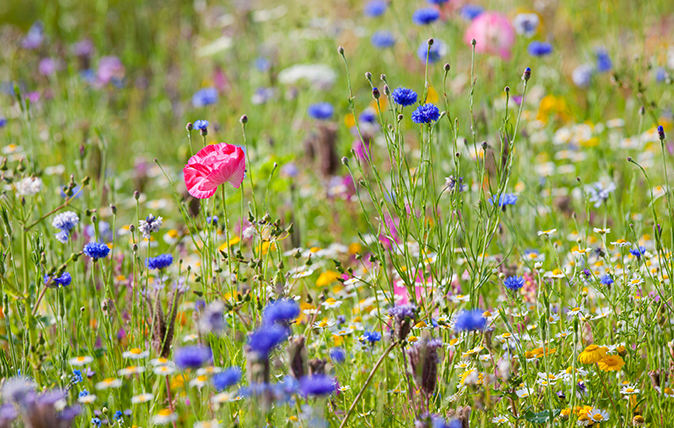Bluebells are among our most welcome annual visitors, writes Toby Keel in celebrating these joyous spring flowers.
It wouldn’t quite be true to say that I can look out of my window and see bluebells as I type these words. But it would be true to say that if I stand up, and peer down at the front garden from my makeshift bedroom desk set-up, there they all are: some deepest, cornflower blue; others lilac; a few white ones in there as well. They are among the finest of Britain’s wildflowers.
At the right time of year it’s an annual treat to take the family out to one of the nearby bluebell hotspots — Winkworth Arboretum is usually top of our list — to enjoy this seasonal burst of colour on the woodland floor.

Beautiful bluebells, Hyacinthoides non-scripta, in the woodland at Leith Hill Place, Dorking, Surrey. ©NTPL/Andrew Butler
In the last few years the bluebells in the front garden — and any we could see on daily exercise walks — were as close as we could get. Thankfully, things are back almost to normal now — and thank goodness.
We shouldn’t take them for granted: over half the world’s bluebells are in the UK, thriving particularly in shady, ancient woodland.

Bluebells at Badbury Clump, Oxfordshire. ©NTPL/Chris Lacey
To inspire you to get out and about we thought it might be a good idea to share some beautiful bluebell images. We first ran this round-up in 2020’s covid lockdown, having been convinced to do so when Country Life reader Sam Gwillym sent us this picture of her springer spaniel, Lilly, during a walk in Oversley Woods (near Alcester in Warwickshire):

Lilly, in Oversely Woods, Warwickshire. Credit: Sam Gwillym
It seems that the National Trust had a similar idea — they collated archive pictures and video footage to share.
Among the treasures is what they describe as a ‘slow TV’ video, which… well, rather than us describe it, we’ll just pop this here:
They also sent a few tips on ‘how to grow bluebells’ by — and this really is a coincidence — the head gardener at Winkworth, Graham Alderton:
- Be patient: Bluebells grown from seed can take a few years to grow to maturity, so it may be five years before you get a flower. For a quicker result you can buy dry bulbs to plant in the Autumn, or get hold of pots of bluebells ‘in the green’ i.e. currently flowering or just finished, which many gardeners believe will have a better chance of getting established. If you try this, plant them at the same depth as they were used to, let them die back naturally, and don’t be surprised if you just get leaves in year one.
- Go native: When buying bluebells, make sure that you’re buying native English bluebells — which have a characteristic, drooping-over look — rather than the invasive Spanish or hybrid varieties. Try to avoid hybridisation at home, too: if the neighbours have Spanish or hybrid bluebells take care that yours don’t get cross-pollinated.
- Stay shady: Bluebells are woodland plants, so they grow best in partial shade with moist but well-drained soil. Plant them in clumps under deciduous trees and feed with leaf mould, manure or peat-free compost.

Bluebells carpet the woodland to the west of the house at Speke Hall, Merseyside. ©NTPL/Andrew Butler
And finally, we’ll leave you with the joys of Arlington Bluebell Walk in East Sussex, who sent in some beautiful pictures of their walk, taken for them by photographer Peter Goldsmith:

Arlington Bluebell Walk. Credit: petergoldsmithphotos.co.uk

Arlington Bluebell Walk. Credit: petergoldsmithphotos.co.uk

18 of the best places across Britain to go and see bluebells this spring
We round up the best gardens to visit to see carpets of bluebells this spring and explain how to tell

A simple guide to the wildflowers of Britain
At long last Spring seems to be here — and with it, the natural flora that give so much pleasure.





